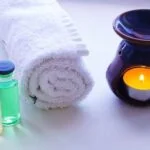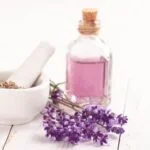Aromatherapy oil blend, a therapeutic practice rooted in ancient traditions, has gained popularity in recent years for its potential to enhance well-being. This article explores the world of aromatherapy oil blends, their history, types, and benefits. By understanding the power of these natural concoctions, you can unlock a multitude of benefits for your physical and mental health.
Dating back centuries, aromatherapy has been used across various cultures for its healing properties. Today, it continues to be a popular holistic approach to promote relaxation, reduce stress, alleviate pain, and improve overall health. Aromatherapy oil blends combine different essential oils that work synergistically to create a customized blend tailored to specific needs.
Discovering the world of aromatherapy oil blends means unraveling the secrets of centuries-old practices and harnessing their potent benefits for modern living. From combating anxiety and insomnia to addressing headaches and stress management, this versatile therapy offers solutions for a wide range of health concerns.
Whether you seek solace in lavender’s calming aroma or find relief in eucalyptus’s invigorating scent, there is an array of essential oils that can be blended to create a personalized concoction just for you.
Intrigued by the idea of embracing nature’s healing powers? In the following sections of this article series, we delve deeper into the history of aromatherapy oil blends and explore their various types and effects. Furthermore, we will guide you on how to choose the right blend for your needs based on personal preferences and desired outcomes. Stay tuned as we provide step-by-step instructions for creating your own DIY aromatherapy oil blends at home.
History of Aromatherapy
Throughout history, the use of aromatherapy oil blends has been prevalent in various cultures and civilizations. Aromatherapy, as a practice, has existed for centuries and has been utilized by ancient civilizations such as the Egyptians, Greeks, and Chinese. These cultures recognized the therapeutic benefits of essential oils and incorporated them into their daily lives for healing and relaxation purposes.
One of the earliest recorded uses of aromatherapy oil blends can be traced back to ancient Egypt. Egyptians were known to use essential oils for embalming practices and religious ceremonies. They believed that these oils possessed powerful healing properties that could promote physical and spiritual well-being.
Similarly, in ancient Greece and Rome, renowned physicians such as Hippocrates and Galen documented the use of aromatic plants for medicinal purposes. They believed that certain fragrances had the ability to treat various ailments. The Greeks also used aromatic oils during massage therapy as a way to relax the body and calm the mind.
In traditional Chinese medicine, aromatherapy oil blends have played a prominent role in enhancing overall health and balance. The Chinese would blend different essential oils with herbs to create potent formulations that targeted specific health concerns. Their belief was that inhaling these blends or applying them topically could restore harmony within the body’s energy pathways.
The historical use of aromatherapy oil blends is a testament to their enduring popularity and effectiveness. These ancient civilizations recognized the power of scent in promoting physical and emotional well-being, a concept that still resonates today. By understanding the rich history behind aromatherapy, we can fully appreciate its value in our modern lives and harness its benefits for our own well-being.
Types of Aromatherapy Oil Blends
Aromatherapy oil blends are created by combining different essential oils to enhance their therapeutic effects. These blends are carefully crafted to create synergistic combinations that provide a wide range of benefits for the mind, body, and emotional well-being. In this section, we will explore some popular types of aromatherapy oil blends and their unique effects.
Calming and Relaxing Blends
Calming and relaxing blends focus on reducing stress, anxiety, and promoting a sense of tranquility. These blends often include essential oils such as lavender, chamomile, clary sage, and bergamot. Lavender is known for its soothing and calming properties, while chamomile has gentle sedative effects that help promote relaxation.
Energizing and Uplifting Blends
Energizing and uplifting blends are designed to invigorate the senses and boost mood. These blends may contain oils such as citrus oils like lemon or orange, peppermint, rosemary, or eucalyptus. Citrus oils are known for their refreshing scent that can uplift the mood instantly, while peppermint and eucalyptus have invigorating properties that increase alertness.
Balancing Blends
Balancing blends aim to restore equilibrium in both the physical and emotional states of being. They may include essential oils like geranium, ylang-ylang, patchouli, or frankincense. Geranium helps harmonize emotions and balance hormone levels; ylang-ylang promotes relaxation while bringing clarity to the mind; patchouli grounds the energy; frankincense encourages deep breathing to promote mental clarity.
Exploring different types of aromatherapy oil blends allows individuals to customize their experiences based on their personal needs and preferences. Whether you are seeking relaxation, an energy boost, or a sense of balance, there is a blend out there for you. Remember to always choose high-quality essential oils and consult with a certified aromatherapist if you have any specific health concerns or conditions.
Top Essential Oils Used in Aromatherapy Oil Blends
One of the key components of aromatherapy oil blends is the essential oils that are used. These oils are derived from various plants and have their own unique scents and therapeutic properties. Some of the top essential oils used in aromatherapy oil blends include lavender, eucalyptus, peppermint, and many more.
Lavender essential oil is one of the most popular and versatile oils used in aromatherapy. Its soothing floral scent helps promote relaxation and reduce anxiety and stress. Lavender oil is also known for its analgesic properties, making it effective in relieving headaches and muscle pain. Additionally, it has antimicrobial properties that can help fight against bacteria and fungi.
Eucalyptus essential oil is commonly known for its refreshing scent and its ability to improve respiratory conditions such as congestion, coughs, and colds. Its expectorant properties help to loosen phlegm and clear the airways, making it a popular choice for inhalation or massage blends targeting respiratory health.
Peppermint essential oil has a strong, minty aroma that provides a cooling sensation when applied topically or inhaled. It is widely used to alleviate symptoms of digestive issues such as bloating, indigestion, and nausea. Peppermint oil also has pain-relieving properties that can help ease headaches and muscle soreness.
Other essential oils commonly used in aromatherapy oil blends include citrus oils like lemon and orange for their uplifting effects on mood; chamomile for its calming properties; tea tree for its antibacterial qualities; and rosemary for its ability to improve mental clarity and focus.
It’s important to note that each essential oil has its own safety guidelines regarding usage, dilution ratios, potential skin sensitivities or allergies. It is crucial to consult with a certified aromatherapist or do thorough research before using any essential oil blend to ensure safe usage according to your specific needs or health conditions.
How to Choose the Right Aromatherapy Oil Blend for Your Needs
Choosing the right aromatherapy oil blend is essential to ensure that you get the desired effects and benefits. With so many options available, it can be overwhelming to decide which blend is best for your needs. Here are some considerations to help you choose the right aromatherapy oil blend based on your personal preferences and desired effects.
- Consider Personal Preferences: When choosing an aromatherapy oil blend, it’s important to consider your personal preferences in terms of scents. Aromatherapy oils come in a wide range of fragrances, from floral and citrusy to woody and earthy. Think about what scents you find most appealing and soothing, as this will enhance your overall experience with the blend.
- Determine Desired Effects: Aromatherapy oil blends offer various benefits depending on their ingredients. Some blends are known for their calming properties and can help reduce stress and anxiety, while others are energizing and can boost focus and concentration. Identify the specific effects you want to achieve from the aromatherapy oil blend, such as relaxation, mood enhancement, or mental clarity.
- Research Oil Properties: Each essential oil used in an aromatherapy oil blend has its own unique properties and benefits. By researching these properties, you can make an informed decision about which oils will best suit your needs. For example, lavender is renowned for its calming properties, eucalyptus is great for respiratory health, and peppermint aids digestion.
When selecting a pre-made aromatherapy oil blend or creating your own blend at home, keep these factors in mind to ensure that you choose the right combination of oils that align with your preferences and desired effects.
- Consider personal preferences in terms of scents
- Determine desired effects such as relaxation or mental clarity
- Research each essential oil’s properties and benefits
By carefully considering these aspects, you can create a personalized aromatherapy oil blend that caters to your specific needs and enhances your overall well-being.
DIY Aromatherapy Oil Blend Recipes
Gathering Ingredients
Before you can begin creating your own aromatherapy oil blends at home, it’s important to gather all the necessary ingredients. The first and most essential ingredient is, of course, the essential oils themselves. Choose oils that suit your preferences and desired effects based on the previous section on the top essential oils used in aromatherapy oil blends. It’s a good idea to have a few different oils on hand so that you can experiment with different combinations.
You will also need a carrier oil to dilute your essential oils. Common carrier oils include coconut oil, sweet almond oil, and jojoba oil. These are necessary because undiluted essential oils can be too strong and may cause skin irritation or other adverse reactions. Finally, consider investing in some glass bottles or roller bottles for storing and applying your homemade blends.
Creating Your Blend
Now that you have all your ingredients ready, it’s time to start creating your own aromatherapy oil blends. Start by determining what purpose or effect you want your blend to have – stress relief, relaxation, energy boost, etc.
To create your blend, begin by choosing a base note essential oil. Base notes are generally heavier and have a longer-lasting scent. Some common base notes include sandalwood, patchouli, and vanilla. Add about 10-15 drops of this essential oil to your glass bottle.
Next, choose a middle note essential oil. Middle notes are considered the heart of the blend and provide balance between the base and top notes. Popular middle notes include lavender, rosemary, and geranium. Add another 10-15 drops of this essential oil to your bottle.
Finally, select a top note essential oil. Top notes are lighter and more volatile than the other two categories of scents; they provide an initial burst of aroma but dissipate quickly. Common top notes include lemon, peppermint, and bergamot. Add 5-10 drops of this essential oil to your bottle.
Testing and Adjusting
Once you have created your blend, it’s important to test it before using it extensively. Apply a small amount of the blend to a patch of skin and wait for at least 24 hours to check for any adverse reactions. If all is well, you can confidently use your aromatherapy oil blend as desired.
If the scent or effects of your blend are not what you anticipated, don’t be discouraged. Aromatherapy is all about finding what works best for you, so feel free to adjust the proportions or try different combinations of oils until you find your perfect blend.
Remember that these DIY blends are intended for personal use and are not meant to replace professional medical advice or treatment. If you have any specific health concerns or conditions, consult with a healthcare professional before incorporating aromatherapy into your routine.
Safety Tips and Precautions When Using Aromatherapy Oil Blends
Aromatherapy oil blends can offer numerous benefits, but it is important to understand the necessary safety precautions when using these blends. Improper use of aromatherapy oils can lead to adverse effects and even potential harm. By following proper dilution guidelines and taking necessary precautions, individuals can safely enjoy the benefits of aromatherapy oil blends.
One important safety measure when using aromatherapy oil blends is ensuring proper dilution. Essential oils are highly concentrated substances and should not be applied directly to the skin or ingested without proper dilution. It is recommended to dilute essential oils with carrier oils such as jojoba oil, coconut oil, or almond oil, before applying them topically.
The general guideline for dilution is 2-3 drops of essential oil per 1 teaspoon (5 ml) of carrier oil for adults. However, this ratio may vary depending on the specific essential oil and individual sensitivity. It is always advisable to do a patch test before using a new blend by applying a small amount on the inner arm and observing for any allergic reactions.
It is also crucial to be aware of potential side effects and contraindications when using aromatherapy oil blends. Some essential oils may cause skin irritation or sensitivity in certain individuals. Pregnant women, infants, and individuals with certain medical conditions such as asthma or epilepsy should exercise caution when using essential oils. Consultation with a healthcare professional is advised in these cases to ensure safe usage.
Proper storage of aromatherapy oils is another important aspect of safety. Essential oils should be stored in dark-colored glass bottles and kept away from direct sunlight and heat sources to maintain their potency and prevent oxidation.
By understanding how to properly dilute essential oils, being aware of potential side effects, and storing oils correctly, individuals can enjoy the benefits of aromatherapy oil blends while prioritizing safety.
| Safety Tips and Precautions | Data |
|---|---|
| Dilution Guideline | 2-3 drops of essential oil per 1 teaspoon (5 ml) of carrier oil for adults |
| Contraindications | Pregnant women, infants, individuals with asthma or epilepsy |
| Storage Recommendations | Dark-colored glass bottles, away from direct sunlight and heat sources |
Aromatherapy Oil Blends for Different Health Concerns
Aromatherapy has been used for centuries as a natural remedy for various health concerns. One of the key benefits of aromatherapy is its ability to address common issues such as stress, insomnia, anxiety, and headaches. Understanding which essential oils are effective for each concern can help individuals find relief and enhance their overall well-being.
Stress is a common problem in today’s fast-paced world, and aromatherapy oil blends can offer a natural solution. Some essential oils known for their calming properties include lavender, bergamot, and chamomile. These oils can be blended together to create a soothing aroma that promotes relaxation and reduces stress levels. Diffusing the blend or using it in massage oil can help to ease tension and promote feelings of tranquility.
Insomnia is another concern that many individuals struggle with. Aromatherapy oil blends can contribute to better sleep by creating a relaxing environment conducive to restful slumber. Essential oils such as lavender, vetiver, and clary sage are known for their sedative effects and can be combined to create a calming blend that helps induce sleep. Using this blend in a diffuser or adding it to bathwater before bedtime can support a more peaceful night’s sleep.
Anxiety is a widespread issue that affects millions of people worldwide. Aromatherapy oil blends can provide an effective way to manage anxiety symptoms naturally. Essential oils like bergamot, ylang-ylang, and frankincense have been shown to reduce feelings of anxiousness and promote relaxation. Creating a personalized blend using these oils can offer relief from anxiety when used in diffusers or during self-massage sessions.
Headaches are another common health concern that aromatherapy oil blends can address. Peppermint oil is known for its analgesic properties and ability to alleviate headache pain. Combining peppermint with other essential oils such as lavender or eucalyptus can enhance its effectiveness. Applying a diluted blend to the temples or forehead can provide quick relief from headaches.
Table: Essential Oils for Different Health Concerns
| Health Concern | Essential Oils |
|---|---|
| Stress | Lavender, Bergamot, Chamomile |
| Insomnia | Lavender, Vetiver, Clary Sage |
| Anxiety | Bergamot, Ylang-Ylang, Frankincense |
| Headaches | Peppermint, Lavender, Eucalyptus |
Using aromatherapy oil blends is a natural and gentle way to address common health concerns. It’s important to remember that essential oils should always be properly diluted before topical use and used in moderation. Each individual may respond differently to different oils, so it’s recommended to start with small amounts and monitor any potential reactions. With the right aromatherapy oil blend personalized to one’s needs, it is possible to find relief and improve overall well-being.
Incorporating Aromatherapy Oil Blends into Your Daily Routine
Aromatherapy oil blends can be a wonderful addition to your daily routine to promote relaxation, relieve stress, and improve overall well-being. There are several ways you can incorporate these blends into your daily life, including using them in diffusers, massages, and baths. Here are some tips on how to use aromatherapy oil blends in these different applications:
- Diffusers: A diffuser is a popular method of enjoying the benefits of aromatherapy oil blends at home or in the office. These devices disperse the scent of the oils into the air, allowing you to breathe in the therapeutic aroma.
To use an oil blend in a diffuser, simply add a few drops of your chosen blend to the water reservoir or pad according to the manufacturer’s instructions. Turn on the diffuser and enjoy the calming scent that fills the room. - Massages: Aromatherapy oils can also be used during massages to enhance relaxation and relieve muscle tension. When using an aromatherapy oil blend for massage, it is important to dilute it with a carrier oil such as sweet almond or jojoba oil.
This helps to ensure that the essential oils are properly absorbed by your skin without causing any irritation. It is recommended to use about 10-15 drops of your chosen blend with every 1 ounce (30 mL) of carrier oil. - Baths: Another way to incorporate aromatherapy blends into your daily routine is by adding them to your bathwater. This provides a soothing and rejuvenating experience that can help relieve stress and promote relaxation. To use an aromatherapy blend in your bath, add about 5-10 drops directly into warm water after you have filled up your bathtub. Swirl it around gently before getting into the bath to ensure that the oils are dispersed evenly.
Remember, when using aromatherapy oil blends in any of these applications, it is important to choose high-quality essential oils and follow proper safety guidelines. Always read the instructions provided with your diffuser or consult a professional aromatherapist for specific usage recommendations. By incorporating aromatherapy oil blends into your daily routine, you can create a calming and rejuvenating environment that enhances your overall well-being.
Conclusion
In conclusion, the use of aromatherapy oil blends has a long history and provides numerous benefits for enhancing well-being. Throughout centuries, aromatherapy oil blends have been used to address various health concerns and promote relaxation and healing. By exploring different combinations of essential oils, individuals can create personalized blends that cater to their specific preferences and desired effects.
When choosing an aromatherapy oil blend, it is important to consider personal needs and goals. Whether one is looking to reduce stress, improve sleep, alleviate anxiety, or relieve headaches, there are specific essential oils that can be blended together to achieve these desired outcomes. Lavender, eucalyptus, peppermint, and many other essential oils have proven efficacy in addressing these health concerns.
Creating DIY aromatherapy oil blends at home is a fun and cost-effective way to explore the world of aromatherapy. By following step-by-step instructions and experimenting with different ratios of essential oils, individuals can discover unique blends that resonate with them personally. However, it is crucial to follow safety tips and precautions to ensure proper dilution and avoid potential side effects.
Incorporating aromatherapy oil blends into daily routines can be done in various ways such as using diffusers, receiving massages, or adding oils to baths. These practices not only enhance the overall experience but also maximize the therapeutic benefits of the oils. By embracing the power of aromatherapy oil blends for enhancing well-being, individuals can create a holistic approach to self-care that promotes relaxation, rejuvenation, and balance in their lives.
Frequently Asked Questions
What is an aromatherapy blend?
An aromatherapy blend is a combination of two or more essential oils that are carefully mixed together to create a specific scent and therapeutic effect. These blends can be used in various forms such as in diffusers, massage oils, bath salts, or even inhaled directly from the bottle.
Aromatherapy blends are often created with a specific purpose in mind, such as promoting relaxation, uplifting mood, or relieving stress. The art of creating aromatherapy blends involves finding the right balance of scents that not only smell pleasant but also work synergistically to provide desired benefits.
What essential oils smell good together?
The choice of essential oils that smell good together greatly depends on personal preferences as well as the desired outcome. Some popular combinations that are often well-loved include lavender and bergamot for a calming and soothing scent, peppermint and eucalyptus for a refreshing blend that can help clear the sinuses, or citrus oils like orange and lemon for an invigorating and uplifting aroma.
Ultimately, finding essential oil combinations that smell good together is subjective and can vary from person to person.
What are the 10 best essential oils to try for aromatherapy?
There are numerous essential oils available for aromatherapy, each offering its own unique benefits and properties. While it’s difficult to narrow down the best essential oils since individual needs differ, there are some popular choices that many people find helpful for various purposes. Lavender is often considered a must-have for its calming and relaxing effects, while peppermint is known for its stimulating and refreshing properties.
Tea tree oil is commonly used for its antimicrobial properties and can be beneficial in diffusers or cleaning products. Other popular essential oils include eucalyptus (for respiratory support), chamomile (for relaxation), lemon (for an uplifting mood), rosemary (for mental clarity), ylang-ylang (for stress relief), frankincense (for spiritual grounding), and bergamot (for mood enhancement). It’s important to note that individual preferences and sensitivities may vary, so it’s essential to experiment and find the best essential oils for one’s personal needs.

Are you looking for a natural way to improve your health and wellbeing?
If so, aromatherapy may be the answer for you.





